The Role of Asset Marking in Compliance and Insurance
For businesses, managing assets isn’t just about keeping track of equipment and inventory—it’s also crucial for regulatory compliance and insurance purposes. Proper asset marking plays a significant role in meeting legal requirements, reducing insurance risks, and providing essential documentation in the event of a loss. In this blog post, we explore how asset marking supports compliance and insurance, and why it should be a key part of your business operations.
Asset Marking and Regulatory Compliance
Many industries have strict regulations regarding the management and tracking of assets, particularly those dealing with sensitive information, health and safety, or hazardous materials. Asset marking is a simple yet effective way to ensure compliance with these regulations.
- Health and Safety: In sectors like construction, manufacturing, and healthcare, asset marking helps businesses comply with health and safety regulations by keeping track of equipment, tools, and machinery. Clear identification of assets ensures that they are maintained, inspected, and used safely, reducing the risk of accidents or equipment failures.
- Data Security: For businesses handling sensitive data, such as IT companies or financial institutions, marking assets like computers, servers, and storage devices is essential for compliance with data protection laws. Proper labelling enables efficient tracking of equipment, reducing the risk of data breaches and ensuring compliance with regulations like GDPR.
Supporting Audit and Asset Reporting
Asset marking makes it easier to conduct regular audits and generate accurate asset reports, both of which are often required for compliance purposes.
- Accurate Record-Keeping: Asset labels, barcodes, or RFID tags help maintain an up-to-date inventory of all business assets. During audits, assets can be quickly scanned and cross-referenced with asset registers to verify their condition, location, and compliance status.
- Verification of Ownership: Marking assets with your business’s name, logo, or a unique identifier provides clear evidence of ownership. This verification is essential during audits, regulatory inspections, or legal disputes.
Asset Marking for Insurance Purposes
Insurance companies often require businesses to maintain detailed records of their assets to determine coverage, assess risk, and process claims in the event of theft, loss, or damage. Asset marking facilitates this process in several ways:
- Inventory Documentation: Asset marking helps create an accurate inventory that includes key information such as asset descriptions, purchase dates, serial numbers, and values. This documentation is vital when applying for insurance policies, as it allows insurers to assess the level of coverage required.
- Proof of Ownership: In the unfortunate event of theft or damage, marked assets provide clear proof of ownership, aiding in the claims process. Visible asset labels, engraved markings, or RFID tags make it easier to identify recovered items and link them to your business.
- Risk Reduction: Insurers may offer lower premiums to businesses that implement robust asset marking and tracking systems, as these measures reduce the risk of theft and loss. By demonstrating that your business takes asset security seriously, you can negotiate more favourable insurance terms.
Speeding Up the Claims Process
When an incident occurs, whether it’s theft, fire, or accidental damage, the speed at which you can provide accurate information to your insurer can significantly impact the claims process. Asset marking allows you to quickly generate detailed reports that include:
- Asset Identification: Unique asset numbers, barcodes, or RFID tags simplify the identification of lost or damaged items, making it easier to compile a comprehensive list for your insurance provider.
- Condition and Maintenance Records: Regularly updated asset tracking systems provide maintenance and condition records that can support your claim by showing the asset was in good working order before the incident.
Planning for Future Investments
In addition to compliance and insurance, asset marking supports better financial planning and budgeting. By tracking the condition, usage, and lifespan of assets, businesses can make informed decisions about future investments and insurance coverage adjustments.
For example, if your asset register indicates that several key pieces of equipment are approaching the end of their useful life, you can plan for replacements and update your insurance policy accordingly. This proactive approach helps maintain compliance and ensures that you’re adequately covered at all times.
Conclusion
Asset marking is a vital practice for businesses aiming to meet regulatory compliance and maintain adequate insurance coverage. By providing clear identification, supporting audits, and simplifying documentation, asset marking reduces risks, speeds up the claims process, and offers peace of mind. Incorporating a robust asset marking system into your operations not only safeguards your assets but also ensures you’re well-prepared to meet compliance requirements and insurance obligations.


Comments are closed